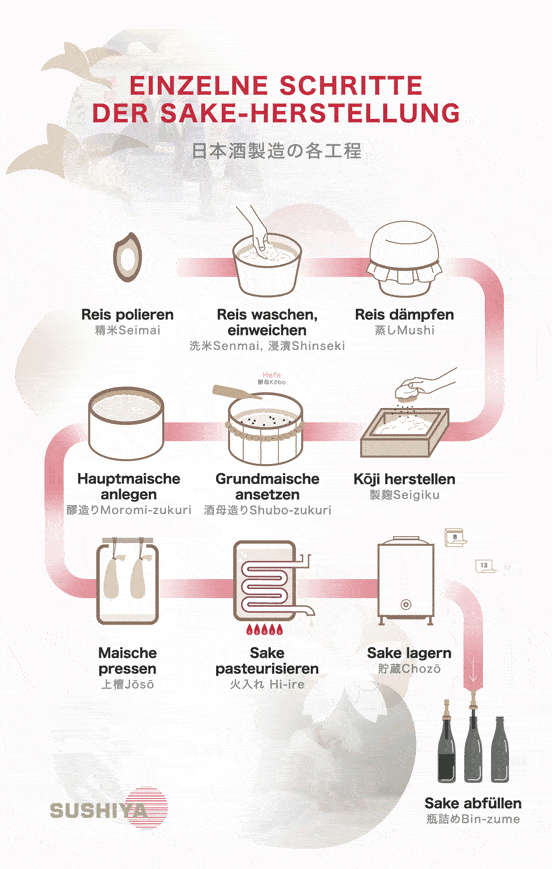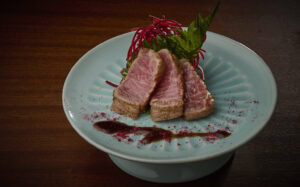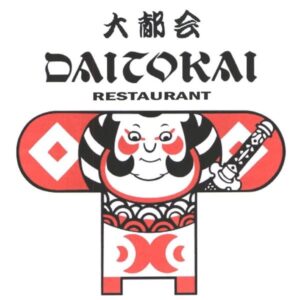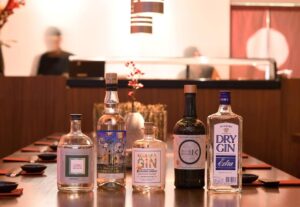Polishing rice for sake
First of all, it is crucial that you cannot use "any" rice for good sake. To be able to produce a high or even very high quality, it requires the use of a special Sake rice.
Sake rice differs from conventional round rice/rice mainly in two things: The distribution of ingredients within the grain and the grain size.
In a "normal" food ice grain, the ingredients are evenly distributed. With sake rice, the strength is concentrated in the center - the other ingredients form the outer layer. Furthermore, the size of the grains differs significantly: sake rice grains are significantly larger at 25%.
Polishing rice is a precision operation that requires extensive processing before fermentation. Since the proteins, fats and minerals are found in the outer layers of the rice grain, they can be peeled off (polished) with special polishing machines. If too many of these ingredients are in the rice, they can cause unintended and even unpleasant flavors in the sake

The degree of polishing determines the sake flavor
The general rule is:
The degree of polishing is so important to the quality of a sake that it is considered a grade gauge and is usually noted on the label. It indicates what percentage of the rice grain was still used. So, for example, if the degree of polishing is 70 %, then 30 % of the rice grain was hulled off. A degree of polishing of 35 % is therefore also described as very high, since a great deal has been polished away.
Based on the degree of polishing, you can see the tendency taste of a sake already on the label.
The higher the degree of polishing, the more fruity and light the sake tastes.
The less polishing, the more savory (umami) the sake will taste and the tongue will sense more earthy notes.
Sake polishing grade as an indicator of quality - and the price
Working with highly polished rice is very laborious - among other things, because there is much less left of the rice grain to brew sake with. And processing is also naturally becoming more difficult as the rice grains get smaller and smaller.
Therefore, sake whose used rice has been very much "polished down" is naturally not only finer, but also much more expensive.
However, the benefits of rice polishing also have their limits: when rice is polished to 35 % and below, the positive effect on the remaining starch core becomes less and less noticeable.
A special machine is used to polish the rice. It may seem like a simple process, but the latest technology is required to polish the rice so that the small grains are not crushed. To prevent the rice from shattering due to frictional heat or sudden temperature changes, brewers must constantly monitor the process with extreme care.
168 hours polish for 23 %
A well-known example of highly polished sake is Dassai 23 with a polishing grade of 23 %, meaning over 70 % were polished away. It takes a whopping 168 hours to achieve this amazing level of polish! This sake is then but also an extremely impressive testimony of craftsmanship.
However, the advantages of rice polishing also have their limits: if rice is polished to below 35 %, the positive effect on the remaining starch core becomes less and less noticeable. The taste of the sake can then hardly be improved and the production costs increase considerably.

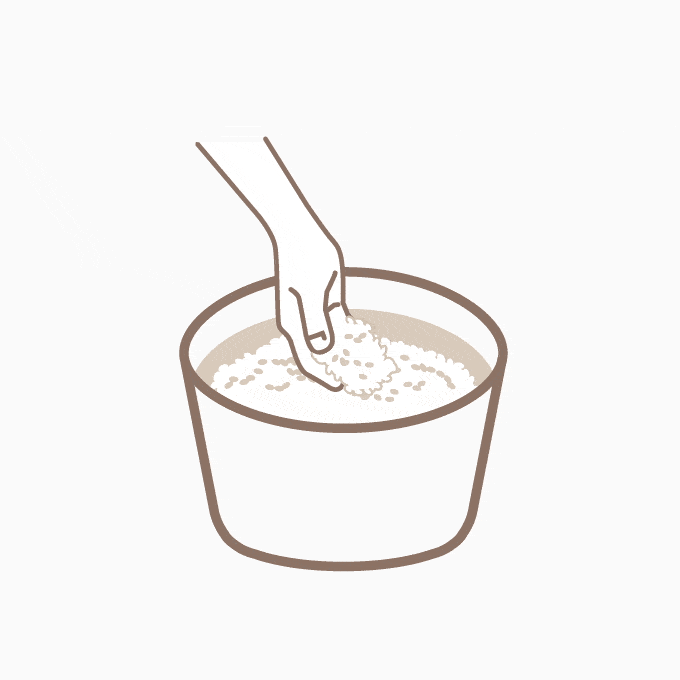
Steaming and soaking sake rice
The polished rice is washed thoroughly and then bathed in water for a while. There it can swell - absorbing about 30 % of liquid. This bath can last from a few minutes to several hours. After that, the rice is steamed dry.
Because the firmness of the rice grain is very important for the further fermentation process, steaming is also a very sensitive process. By steaming for too long, rice becomes too soft and dissolves very quickly during fermentation. As a result, the sake contains too much acid and becomes watery.
After steaming, the rice is beaten on white cloths and quickly cooled down (to about 30°C). The most precious sake is also traditionally made in the winter months to achieve rapid cooling. In the past, sake brewing always took place in the winter months because that was the only time when temperature control and cooling of the rice during fermentation could be reliably ensured.
Making Kōji
Alcohol can only develop if the yeast bacteria have sugar available. Therefore, the starch (long-chain carbohydrates) of the rice grain must be converted into sugar (long-chain carbohydrates).
In beer brewing, this happens through the process of malting (a germination process) - that is, from the barley itself. The rice, however, must receive "help from the outside: Here, the biochemical substance of the Kōji mold fungus (Aspergillus oryzae) ensures sake fermentation.
Kōji production (known as seigiku 製麹), is the central foundation of the sake brewing process. The impact on the final sake product is immense. About one-third of the amount of steamed rice must be inoculated with the fungus Aspergillus orizae to obtain rice fermented with yeast. This produces various types of hydrolytic enzymes, vitamins and amino acids. The enzymes convert the starch of the steamed rice into sugar (glucose); the amino acids have an influence on the taste and aroma of the sake.
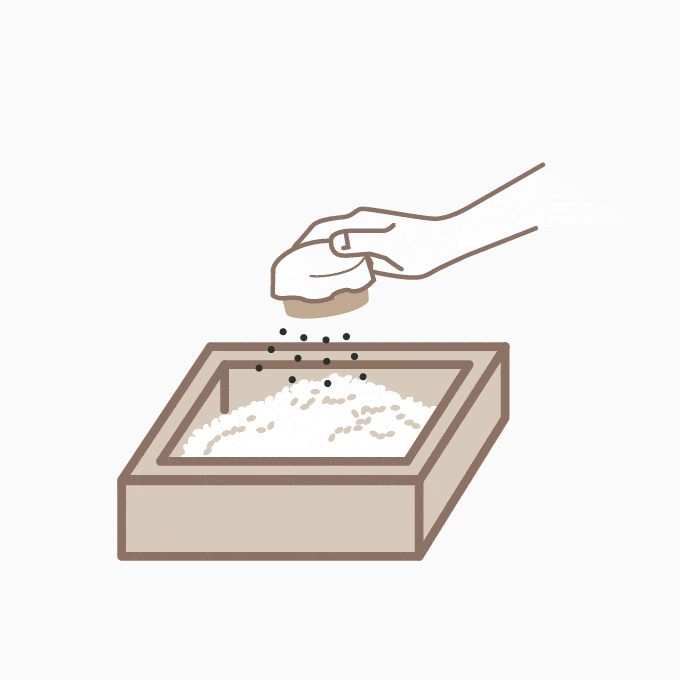
Two days of fermentation for best flavor development in rice Kōji
The spores of the mold are sprayed over the rice. This is done in a special room in the kura (brewery) called the "Kōji Muro".
The Kōji Muro room has a constant temperature of 30° Celsius and high humidity. The rice is kneaded - usually by hand - and wrapped in cloths to prevent heat and moisture loss.
As soon as the mold multiplies, which can also be seen very well with the naked eye as soft white fluff after 20 hours, additional heat is generated once again. To ensure that the optimal temperature is always given, the sake brewers control this again and again by precise measurements.
The production of rice Kōji is a time-consuming process and usually takes between 36 and 48 hours. During this time, artisan sake brewers cultivate their mushroom. Only then has the koji rice reached the right temperature and the desired flavor balance of aromas, the enzyme content is right, and the chemical substances for further use are present. In the next step of sake production, the reproduction of the mold must be stopped. To do this, the rice Kōji is cooled down as quickly as possible.
Preparation of the basic sake mash "Shubo
In addition to Kōji, another microorganism is essential for sake brewing: yeast. The action of this yeast can promote alcoholic fermentation.
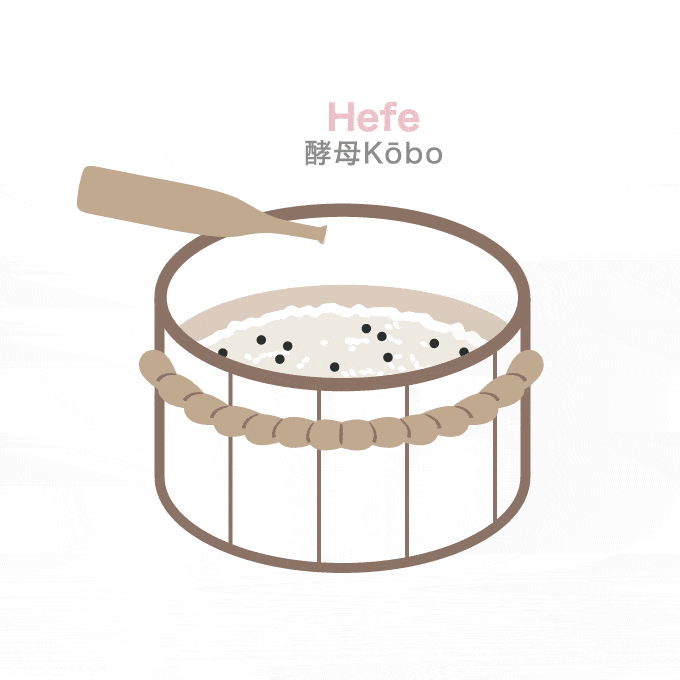
In the next step, steamed rice, Kōji, water and a small amount of yeast culture are added to a vat where good, healthy yeast bacteria are massively multiplied.
This liquid is the basic mash of sake and is referred to in the technical term as "shubo" (酒母) or "moto" (酛).
A quick way to apply the shubo: the Sokujo method
To protect against unwanted bacteria, the shubo must always be kept in an acidic environment. Lactic acid is used here, and there are two types of shubo, depending on how the lactic acid is added. The first is the Sokujō-kei shubo (速醸系酒母, fast type), in which artificially produced lactic acid is added. With this method, the basic mash can be efficiently finished in about two weeks. The Sokujō method is the standard in sake production today.
The other type is Kimoto-kei shubo (生酛系酒母, Traditional Type), which is grown by ingesting naturally occurring lactic acid bacteria. It takes twice as much time and effort to make a kimoto-kei shubo as it does with the Sokujō method.
The Kimoto-kei-Shubo is applied either by Kimoto method or Yamahai method.
The traditional way to apply the Shubo: the Kimoto method
In the Kimoto method, brewers first put water, steamed rice, and Kōji in a vat and then rub the rice in it with a wooden stick.
This process is called "Yamaoroshi" (山卸し). In the past, there was little rice suitable for sake brewing and no modern technology that could effectively help with rice polishing. Therefore, it took a long time for the rice to dissolve, and there was always a risk that undesirable microorganisms would proliferate.
To reduce this risk, brewers went to the trouble of applying the time-consuming "yamaoroshi".
For over three hundred years, from the 16th century to the beginning of the 20th century, the Kimoto method was considered the standard in sake production. This method tends to be avoided nowadays because it is very time-consuming and labor-intensive. Maintaining a certain level of quality requires a high degree of skill from experienced brewers, but when successful, the result is a rich sake with nice acidity and complexity. An increasing number of breweries are working to revive this tradition.
Daishichi Shuzō in Fukushima Prefecture is one of the few breweries that has produced all of its sake using this Kimoto method since its founding in 1752.
Modern alternative for the Kimoto method: the Yamahai method
The Yamahai method a simplification of the Kimoto method discovered around 1900. It omits the labor-intensive process of grinding it into a paste (yamaoroshi). Thanks to improvements in sake brewing techniques, such as the development of sake rice, improvements in rice polishing techniques, and the discovery of Kōji with strong saccharifying power, the need for laborious work such as "yamaoroshi" has decreased.
Yamahai, however, is a particularly interesting method of making the starter yeast. Wild yeast and other bacteria can settle in the base mash and influence the fermentation as it has contact with the air. As a result, the taste and style of the starter yeast can still change naturally. The sake becomes more special, unpredictable and also much more complex than sake made from pure controlled and cultured yeasts. Strong bodies and nice acidity often result, which pair well with foods with earthy, deep and bold flavors and acidity.
The preparation of the main sake mash
During primary fermentation, the Kōji converts the rice starch into sugar, while the yeast breaks down the sugar to produce alcohol and carbon dioxide. This simultaneous and parallel change is the "multiple parallel fermentation" characteristic of sake
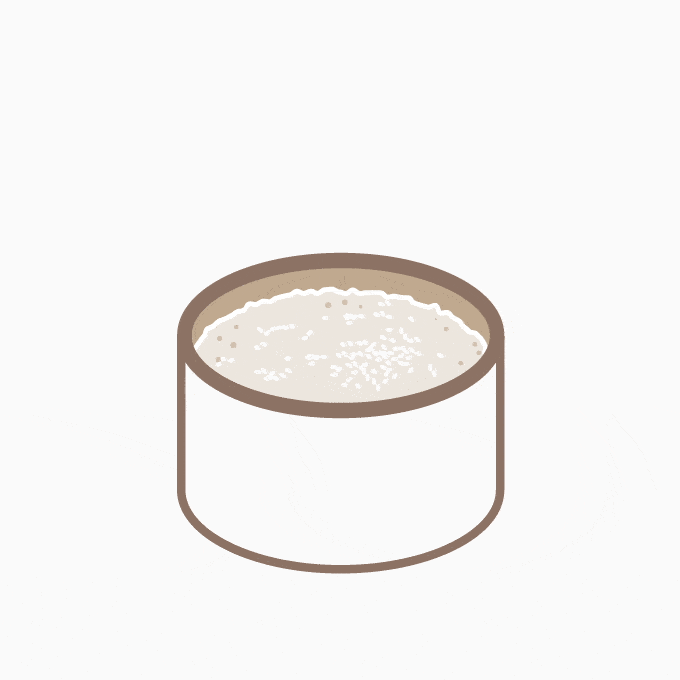
In this step, the shubo (base mash) is poured into a large tank, then the steamed rice, Kōji rice and water are added in three separate passes over a period of four days. This process is called "sandan-jikomi" (three-stage addition).
When all ingredients are mixed at once, the acidity of the shubo and the density of the yeast decrease significantly, increasing the risk of bacterial and wild yeast growth. This three-step addition prevents the yeast from being overworked and stabilizes the fermentation environment. This method allows the yeast to continue fermentation without losing its activity, resulting in alcohol with an alcohol content of over 20 degrees at the end of the process. This is an unusually high alcohol content for a brewed alcoholic beverage and a unique method that sake can be proud of.

Immediately after mashing, Moromi is like a solid mass of swollen rice grains, but begins to soften as saccharification progresses.
At an early stage, the specific gravity and viscosity, even after a certain liquefaction extremely high and the mash is very sweet.
As fermentation progresses, the specific gravity is reduced and the mash becomes increasingly lighter (more liquid) and less sweet. For this reason, it is possible to estimate the fermentation state by changes in sweetness and specific gravity. In the later stages, the specific gravity becomes equal to or even lower than water, and the liquid portion becomes low viscosity, just like water. Sweetness gives way to the dry taste of alcohol.
Moromi is monitored for temperature and ingredients over three to six weeks, depending on the type of sake produced. Through a clever control of the fermentation temperature, which, for example, at Daiginjō quality at times in the very low range of 5°- 7°C, the flavors in the sake can develop in the best possible way. Fermentation lasts between 20 and 40 days, depending on temperature control.
The methods and techniques briefly described in this section have been increasingly developed and cultivated in Japan for several hundred years and are considered unique in the world.
Pressing and filtering the mash
After the main mash has fermented for many days, the moromi is pressed. The remaining rice from the dregs is thus removed.
By the way: The residues (spent grains), which still contain protein substances and starch, can be further used for marinades, soups or preserved vegetables, for example.
This process differs depending on how cloudy the brewmaster wants the sake.
After the sake has rested for another ten days or so, it is filtered through charcoal to remove even the smallest solids, increase the shelf life and purity of the sake, or remove unwanted colors.
From this point on, the sake can be pasteurized, stored for aging, diluted and bottled, depending on the brewery and the type of sake produced.
By the way, the freshly "pressed" sake is called "Shiboritate" (しぼりたて).
By the way, there are some sake manufacturers who also offer particularly high-quality variants of their best sake, which were not pressed from the mash with the press, but were pressed without force, so to speak - drip-pressed is what they call it, for example. Such things can quickly cost well over 100 euros - and you can actually taste the difference clearly.

Pasteurization, bottling and storage of sake
Among other things, to prevent turbidity, the sake is usually pasteurized twice after pressing and filtration - once after pressing and once at bottling. This is done at temperatures between about 60° and 65° degrees Celsius.
This heat stops the enzymatic reaction, the lactic acid bacteria are inhibited and the sake is preserved. Thus, it becomes storable without the addition of sulfur.
After the first pasteurization, the sake is aged in steel tanks for 6-12 months. When bottled, it is pasteurized again in a water bath.
There are also types of sake without pasteurization (Namazake 生酒) or with only one pasteurization (Nama-chozō-shu 生貯蔵酒 or Nama-zume-shu 生詰め酒):
At Namazake sake is not pasteurized at all.
At Nama-chozō-shu (freshly stored), the sake matures unpasteurized; pasteurization takes place only at bottling.
At Nama-zume-shu it is exactly the opposite: pasteurization takes place before ripening; it is no longer pasteurized during bottling.
These types of sake are characterized by a fresh flavor profile.
Long storage for a round taste
The resulting sake is now aged for about 6 months to 1 year to allow it to settle and round out its flavor profile. Some breweries leave their best Daiginjō sake even several years in (refrigerated) storage, so that the flavor can develop in all its complexity.
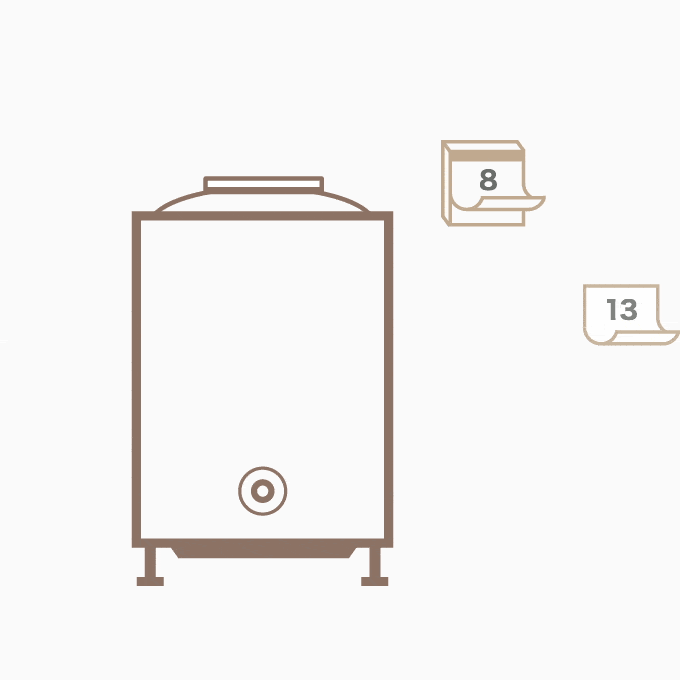
Normally, the sake produced contains about 20% alcohol. Most sake varieties are therefore still diluted with water during bottling to lower this level. Finally, finished sake then have an alcohol content of about 14-16%.
The majority of sake varieties are created in this process, which we have described here. But there are also other ways of production, where specific parts are different. There is sake that matures in wooden barrels (Taruzake 樽酒), sake undiluted (Genshu 原酒), unfiltered (Muroka 無濾過) or unpasteurized (Namazake 生酒).
What all sake have in common, however, is the high cost effort that goes into creating this wonderful drink, at least when it comes to premium sake.
Two months of intensive artisan work quickly pass before a sake is bottled, a lot of experience, craftsmanship and great attention throughout the production process are necessary to create the best varieties.
This also explains why high-quality premium sake - especially when imported to Germany - is not entirely cheap and by no means a "cheap rice liquor".

